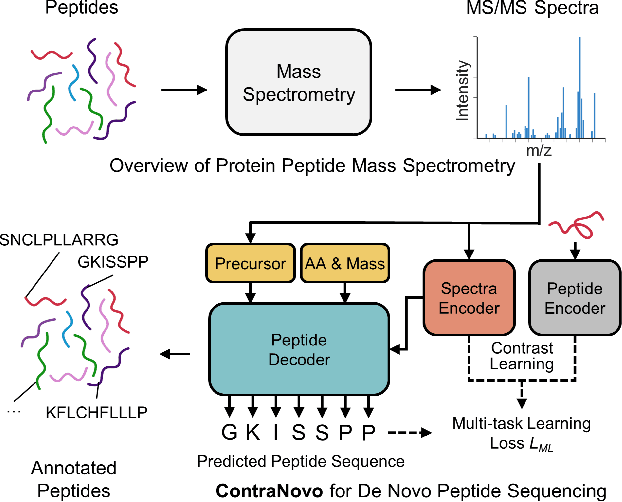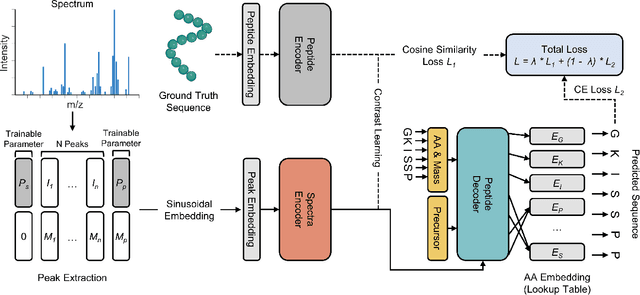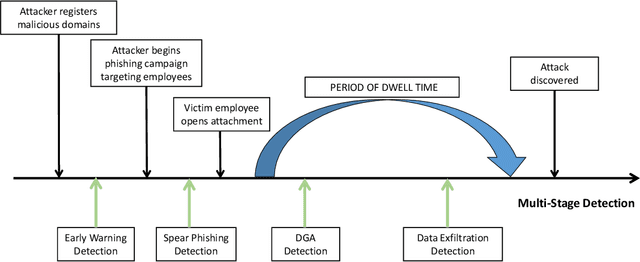Zhiqiang Gao
Plan Then Action:High-Level Planning Guidance Reinforcement Learning for LLM Reasoning
Oct 02, 2025Abstract:Large language models (LLMs) have demonstrated remarkable reasoning abilities in complex tasks, often relying on Chain-of-Thought (CoT) reasoning. However, due to their autoregressive token-level generation, the reasoning process is largely constrained to local decision-making and lacks global planning. This limitation frequently results in redundant, incoherent, or inaccurate reasoning, which significantly degrades overall performance. Existing approaches, such as tree-based algorithms and reinforcement learning (RL), attempt to address this issue but suffer from high computational costs and often fail to produce optimal reasoning trajectories. To tackle this challenge, we propose Plan-Then-Action Enhanced Reasoning with Group Relative Policy Optimization PTA-GRPO, a two-stage framework designed to improve both high-level planning and fine-grained CoT reasoning. In the first stage, we leverage advanced LLMs to distill CoT into compact high-level guidance, which is then used for supervised fine-tuning (SFT). In the second stage, we introduce a guidance-aware RL method that jointly optimizes the final output and the quality of high-level guidance, thereby enhancing reasoning effectiveness. We conduct extensive experiments on multiple mathematical reasoning benchmarks, including MATH, AIME2024, AIME2025, and AMC, across diverse base models such as Qwen2.5-7B-Instruct, Qwen3-8B, Qwen3-14B, and LLaMA3.2-3B. Experimental results demonstrate that PTA-GRPO consistently achieves stable and significant improvements across different models and tasks, validating its effectiveness and generalization.
Curriculum Learning for Biological Sequence Prediction: The Case of De Novo Peptide Sequencing
Jun 16, 2025Abstract:Peptide sequencing-the process of identifying amino acid sequences from mass spectrometry data-is a fundamental task in proteomics. Non-Autoregressive Transformers (NATs) have proven highly effective for this task, outperforming traditional methods. Unlike autoregressive models, which generate tokens sequentially, NATs predict all positions simultaneously, leveraging bidirectional context through unmasked self-attention. However, existing NAT approaches often rely on Connectionist Temporal Classification (CTC) loss, which presents significant optimization challenges due to CTC's complexity and increases the risk of training failures. To address these issues, we propose an improved non-autoregressive peptide sequencing model that incorporates a structured protein sequence curriculum learning strategy. This approach adjusts protein's learning difficulty based on the model's estimated protein generational capabilities through a sampling process, progressively learning peptide generation from simple to complex sequences. Additionally, we introduce a self-refining inference-time module that iteratively enhances predictions using learned NAT token embeddings, improving sequence accuracy at a fine-grained level. Our curriculum learning strategy reduces NAT training failures frequency by more than 90% based on sampled training over various data distributions. Evaluations on nine benchmark species demonstrate that our approach outperforms all previous methods across multiple metrics and species.
PhySense: Principle-Based Physics Reasoning Benchmarking for Large Language Models
May 30, 2025Abstract:Large language models (LLMs) have rapidly advanced and are increasingly capable of tackling complex scientific problems, including those in physics. Despite this progress, current LLMs often fail to emulate the concise, principle-based reasoning characteristic of human experts, instead generating lengthy and opaque solutions. This discrepancy highlights a crucial gap in their ability to apply core physical principles for efficient and interpretable problem solving. To systematically investigate this limitation, we introduce PhySense, a novel principle-based physics reasoning benchmark designed to be easily solvable by experts using guiding principles, yet deceptively difficult for LLMs without principle-first reasoning. Our evaluation across multiple state-of-the-art LLMs and prompt types reveals a consistent failure to align with expert-like reasoning paths, providing insights for developing AI systems with efficient, robust and interpretable principle-based scientific reasoning.
Universal Biological Sequence Reranking for Improved De Novo Peptide Sequencing
May 23, 2025Abstract:De novo peptide sequencing is a critical task in proteomics. However, the performance of current deep learning-based methods is limited by the inherent complexity of mass spectrometry data and the heterogeneous distribution of noise signals, leading to data-specific biases. We present RankNovo, the first deep reranking framework that enhances de novo peptide sequencing by leveraging the complementary strengths of multiple sequencing models. RankNovo employs a list-wise reranking approach, modeling candidate peptides as multiple sequence alignments and utilizing axial attention to extract informative features across candidates. Additionally, we introduce two new metrics, PMD (Peptide Mass Deviation) and RMD (residual Mass Deviation), which offer delicate supervision by quantifying mass differences between peptides at both the sequence and residue levels. Extensive experiments demonstrate that RankNovo not only surpasses its base models used to generate training candidates for reranking pre-training, but also sets a new state-of-the-art benchmark. Moreover, RankNovo exhibits strong zero-shot generalization to unseen models whose generations were not exposed during training, highlighting its robustness and potential as a universal reranking framework for peptide sequencing. Our work presents a novel reranking strategy that fundamentally challenges existing single-model paradigms and advances the frontier of accurate de novo sequencing. Our source code is provided on GitHub.
Noise-Consistent Siamese-Diffusion for Medical Image Synthesis and Segmentation
May 09, 2025Abstract:Deep learning has revolutionized medical image segmentation, yet its full potential remains constrained by the paucity of annotated datasets. While diffusion models have emerged as a promising approach for generating synthetic image-mask pairs to augment these datasets, they paradoxically suffer from the same data scarcity challenges they aim to mitigate. Traditional mask-only models frequently yield low-fidelity images due to their inability to adequately capture morphological intricacies, which can critically compromise the robustness and reliability of segmentation models. To alleviate this limitation, we introduce Siamese-Diffusion, a novel dual-component model comprising Mask-Diffusion and Image-Diffusion. During training, a Noise Consistency Loss is introduced between these components to enhance the morphological fidelity of Mask-Diffusion in the parameter space. During sampling, only Mask-Diffusion is used, ensuring diversity and scalability. Comprehensive experiments demonstrate the superiority of our method. Siamese-Diffusion boosts SANet's mDice and mIoU by 3.6% and 4.4% on the Polyps, while UNet improves by 1.52% and 1.64% on the ISIC2018. Code is available at GitHub.
Discrete Wavelet Transform-Based Capsule Network for Hyperspectral Image Classification
Jan 08, 2025



Abstract:Hyperspectral image (HSI) classification is a crucial technique for remote sensing to build large-scale earth monitoring systems. HSI contains much more information than traditional visual images for identifying the categories of land covers. One recent feasible solution for HSI is to leverage CapsNets for capturing spectral-spatial information. However, these methods require high computational requirements due to the full connection architecture between stacked capsule layers. To solve this problem, a DWT-CapsNet is proposed to identify partial but important connections in CapsNet for a effective and efficient HSI classification. Specifically, we integrate a tailored attention mechanism into a Discrete Wavelet Transform (DWT)-based downsampling layer, alleviating the information loss problem of conventional downsampling operation in feature extractors. Moreover, we propose a novel multi-scale routing algorithm that prunes a large proportion of connections in CapsNet. A capsule pyramid fusion mechanism is designed to aggregate the spectral-spatial relationships in multiple levels of granularity, and then a self-attention mechanism is further conducted in a partially and locally connected architecture to emphasize the meaningful relationships. As shown in the experimental results, our method achieves state-of-the-art accuracy while keeping lower computational demand regarding running time, flops, and the number of parameters, rendering it an appealing choice for practical implementation in HSI classification.
Unlocking the Non-Native Language Context Limitation: Native Language Prompting Facilitates Knowledge Elicitation
Aug 07, 2024



Abstract:Multilingual large language models (MLLMs) struggle to answer questions posed in non-dominant languages, even though they have already acquired the relevant knowledge from their dominant language corpus. In contrast, human multilinguals can overcome this issue by invoking the relatively rich knowledge acquired from native language texts through Positive Native Language Transfer (PNLT). Inspired by this, we analogize the dominant language of MLLMs to the native language of human multilinguals, and propose Native Language Prompting (NatLan) to simulate the PNLT observed in human multilinguals. It explicitly creates native language contexts for MLLMs to facilitate the elicitation of the rich native language knowledge during question-answering, unlocking the limitations imposed by non-native language contexts on the effective application of knowledge. By employing multi-MLLM collaboration, NatLan reduces the workload on each MLLM in simulating PNLT and refines semantic transfer. On the C-Eval benchmark, NatLan provides up to a 10.1% average accuracy improvement and up to a 5.0% increase in the hard-level subset across five MLLMs, surpassing all top-notch related methods. Our code is available at https://github.com/AnonyNLP/NatLan.
ContraNovo: A Contrastive Learning Approach to Enhance De Novo Peptide Sequencing
Dec 18, 2023



Abstract:De novo peptide sequencing from mass spectrometry (MS) data is a critical task in proteomics research. Traditional de novo algorithms have encountered a bottleneck in accuracy due to the inherent complexity of proteomics data. While deep learning-based methods have shown progress, they reduce the problem to a translation task, potentially overlooking critical nuances between spectra and peptides. In our research, we present ContraNovo, a pioneering algorithm that leverages contrastive learning to extract the relationship between spectra and peptides and incorporates the mass information into peptide decoding, aiming to address these intricacies more efficiently. Through rigorous evaluations on two benchmark datasets, ContraNovo consistently outshines contemporary state-of-the-art solutions, underscoring its promising potential in enhancing de novo peptide sequencing. The source code is available at https://github.com/BEAM-Labs/ContraNovo.
A Higher-Order Semantic Dependency Parser
Jan 27, 2022



Abstract:Higher-order features bring significant accuracy gains in semantic dependency parsing. However, modeling higher-order features with exact inference is NP-hard. Graph neural networks (GNNs) have been demonstrated to be an effective tool for solving NP-hard problems with approximate inference in many graph learning tasks. Inspired by the success of GNNs, we investigate building a higher-order semantic dependency parser by applying GNNs. Instead of explicitly extracting higher-order features from intermediate parsing graphs, GNNs aggregate higher-order information concisely by stacking multiple GNN layers. Experimental results show that our model outperforms the previous state-of-the-art parser on the SemEval 2015 Task 18 English datasets.
An AI-based, Multi-stage detection system of banking botnets
Jul 25, 2019



Abstract:Banking Trojans, botnets are primary drivers of financially-motivated cybercrime. In this paper, we first analyzed how an APT-based banking botnet works step by step through the whole lifecycle. Specifically, we present a multi-stage system that detects malicious banking botnet activities which potentially target the organizations. The system leverages Cyber Data Lake as well as multiple artificial intelligence techniques at different stages. The evaluation results using public datasets showed that Deep Learning based detections were highly successful compared with baseline models.
 Add to Chrome
Add to Chrome Add to Firefox
Add to Firefox Add to Edge
Add to Edge